Featured Snippets: What They Are & How to Get Them
Gabriela Jhean
What Are Featured Snippets?
Featured snippets are concise summaries of text that appear near the top of Google search engine results pages (SERPs). They provide quick answers to a user’s search query.
Featured snippets are one of the most prominent search results. They appear above all organic listings and under sponsored posts.
SEO professionals and digital marketers refer to this as “position zero.”
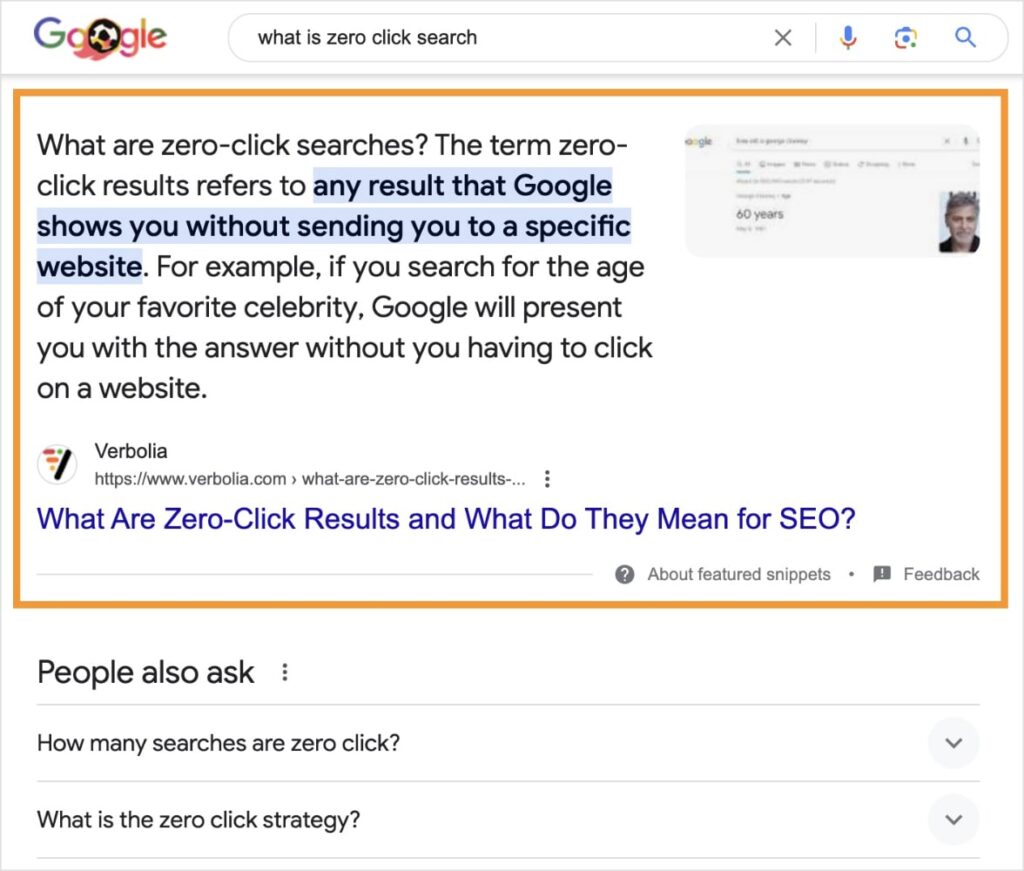
Table of Contents
Why Are Featured Snippets Important?
Featured snippets are important because they can dramatically increase your website’s visibility. Due to their prominent positioning on the SERP, you have a greater chance of capturing users’ attention and clicks.
This translates to more organic traffic for your website.
Additionally, featured snippets can boost your website’s credibility.
If Google chooses your content to answer a user’s query, it shows that your site is a reliable source of information.
Featured Snippets vs Rich Snippets: What’s the Difference?
While both featured snippets and rich snippets enhance search results, they are different.
- Featured snippets are direct answers to a search query that appear at the top of Google search results. They’re like a quick summary of the information a user is looking for.
- Rich snippets are enhanced search results that include additional information beyond the title, URL, and meta description. This can include things like ratings, prices, images, or other details.
Essentially, a featured snippet is a type of rich snippet, but not all rich snippets are featured snippets.
Featured snippets occupy the coveted “position zero” at the top of search results, while rich snippets can appear anywhere on the page.
Types of Featured Snippets (With Examples)
There are several types of featured snippets that can appear in Google search results.
Let’s look at four of the most common.
1. Paragraph Snippets
According to a Semrush study, paragraph snippets are the most common type and make up 70% of featured snippets.
They provide a concise answer to a search query in a single paragraph. These snippets are often used to define terms or concepts.
If relevant to the query, Google may also include images next to this snippet.
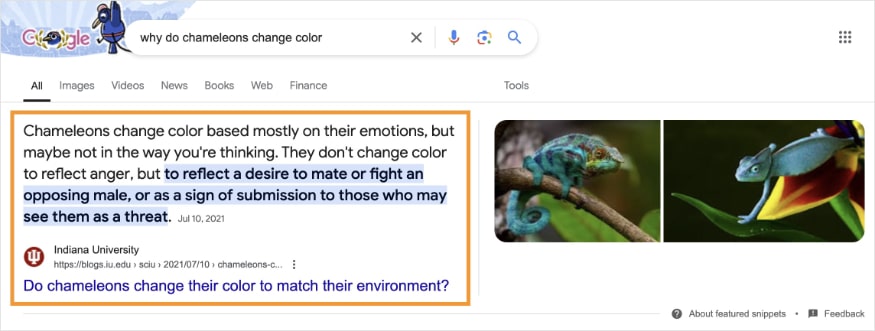
To increase your chances of appearing as a paragraph snippet, structure your content with clear headings and subheadings, and ensure the answer to the query is prominently displayed in a paragraph format.
2. List Snippets
List snippets present information in a bulleted or numbered format. They’re often used for how-to guides, top 10 lists, or comparisons.
For numbered lists, Google presents a series of chronological order. This type of list snippet is often used for tutorials.
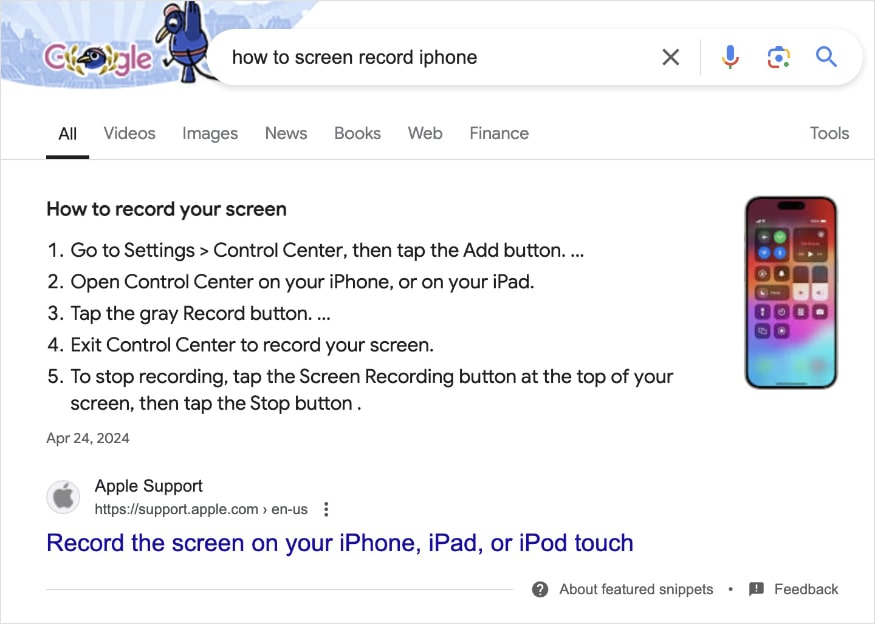
A bulleted list, on the other hand, does not require a specific order.
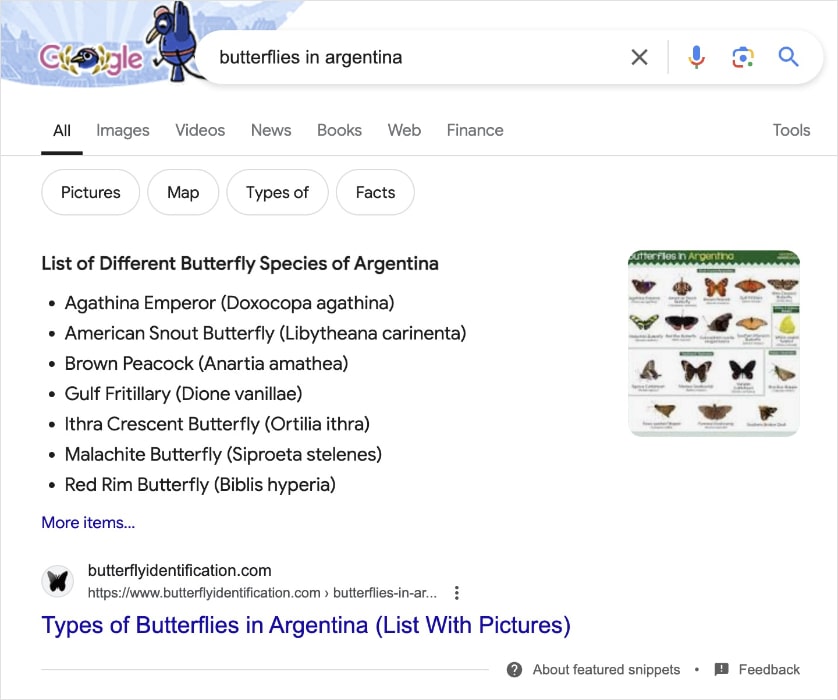
To optimize for list snippets, use clear numbered or bulleted lists within your content, and ensure each list item is concise and informative.
3. Table Snippets
Table snippets display information in a table format, making it easy to compare data points. They’re often used for data-heavy topics like comparisons, statistics, or conversions.
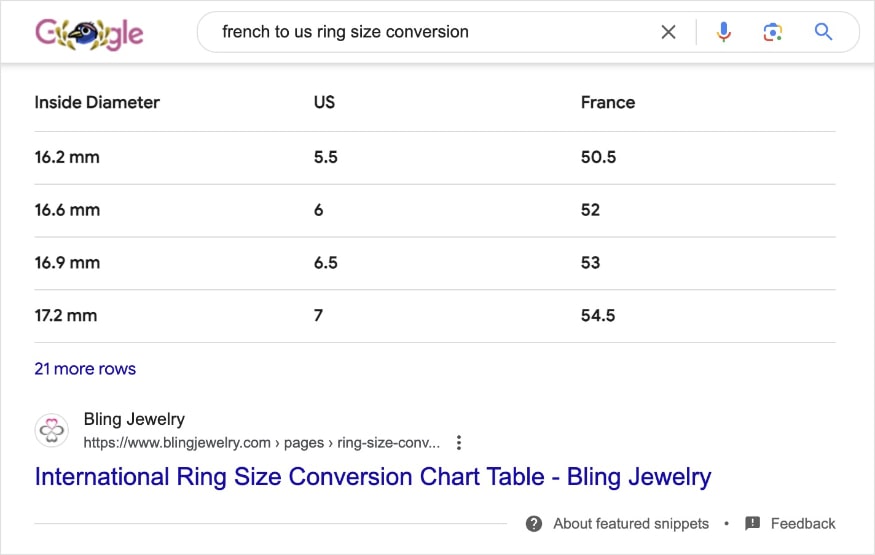
To increase your chances of appearing as a table snippet, create well-structured tables with clear headers and relevant data.
4. Video Snippets
Video snippets are the least common type of featured snippets. They showcase a relevant video to the user’s query. Google often uses videos from YouTube but can pull from websites, too.
Video snippets often address “how to” queries.
Users can play the video directly in the SERP.
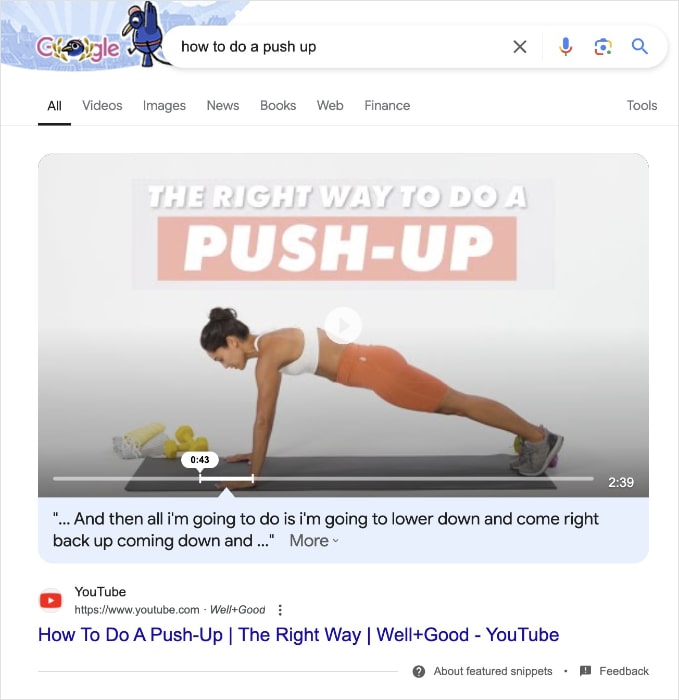
To optimize for video snippets, ensure your video content is high-quality, informative, and relevant to the search query.
Additionally, consider adding transcripts or closed captions to your videos to improve accessibility and help Google understand the content.
How to Get Featured Snippets
Getting your content to appear in a featured snippet requires a strategic approach.
Here are some key steps:
1. Identify Keywords With Featured Snippets
Start by researching keywords relevant to your website and check if they have a featured snippet.
There are two ways you can do this:
- Perform a manual search for your keyword in Google and see if a featured snippet appears. (Free option, but time-consuming to search keywords one by one.)
- Use a keyword research tool, which will show you if a keyword has a featured snippet. (Typically comes at a cost but is much faster and includes additional SEO features.)
For the first option, just enter your keyword into Google.
For example, let’s imagine I have a jewelry business and am curating content ideas for our blog. I may search “how to clean silvery jewelry” to see if there is a featured snippet.
Based on my search, there is.

Because of this, I would proceed to the next steps.
(If there wasn’t a featured snippet, I would repeat this process with another keyword.)
Now, let’s see how this process looks using a keyword research tool.
I’ll use LowFruits for our example.
LowFruits is a keyword research and SERP analysis tool designed for small businesses. It helps you find low-competition keywords that are easy to rank for.
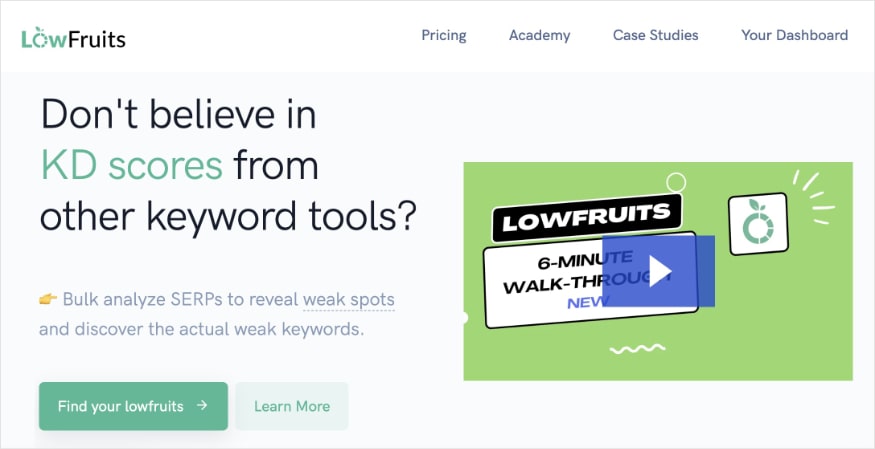
To start, let’s plug our same keyword (how to clean silver jewelry) into the KWFinder and click Search.
(You can change the country and language according to your preferences.)

The tool will bring you to a new page that shows you how many keyword ideas it found related to your search.
In our example, that’s 212 related keywords.
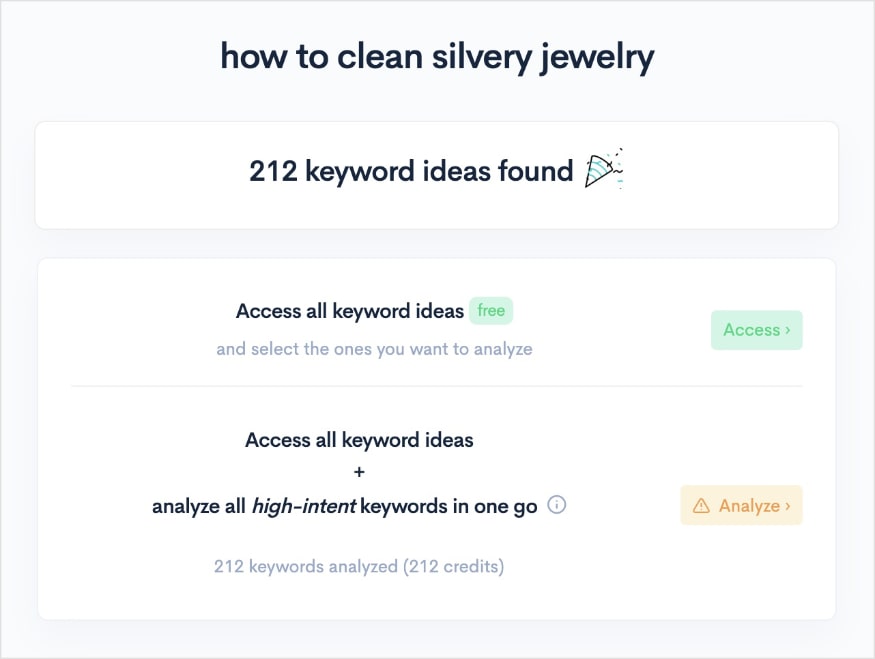
From here, you have two options for viewing your keywords:
- Access all keyword ideas (and manually select which ones to analyze.)
- Access all keyword ideas + analyze all high-intent keywords. (High-intent keywords have commercial or transactional intent, meaning they’re likelier to convert.)
I’m going to select the second option, but if you’re low on credits (LowFruits uses a pay-as-you-go credit system), you can always select the first.
You’ll arrive at a page that looks like the report below.
Now, to see which keywords have featured snippets, we’re going to want to use a filter.
Click Filters.
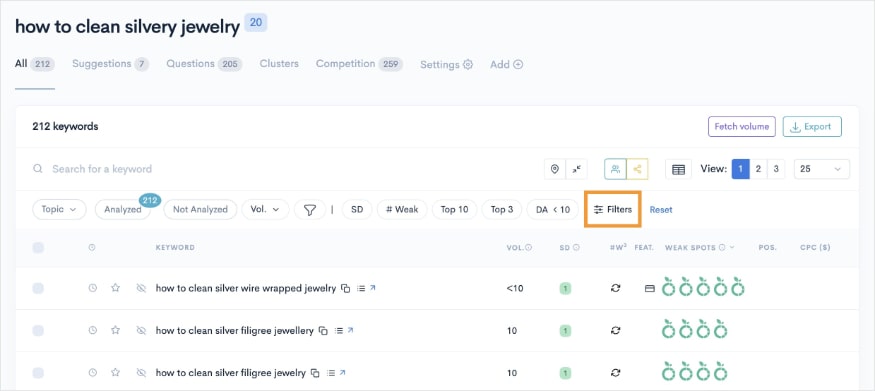
This will open a pop-out tab where you will scroll down to Other.
Expand this menu and turn the Featured Snippet option on.
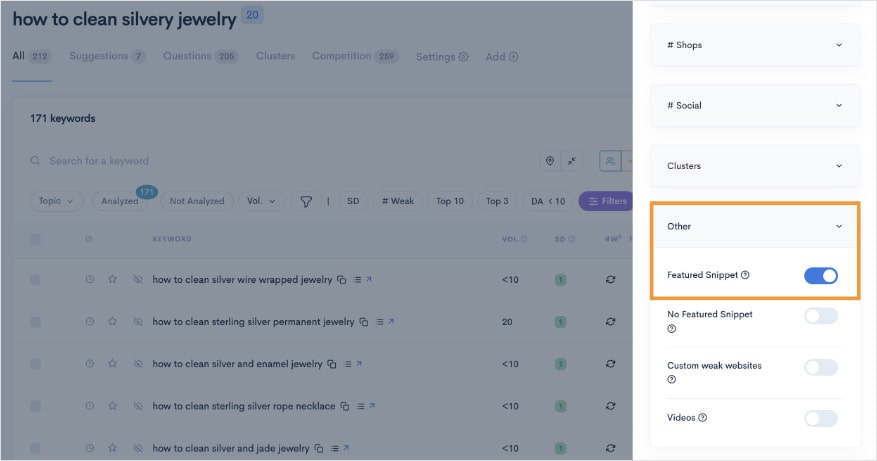
You can then click back into your report, which now shows only keywords with featured snippets on the SERP.
Not only is this process faster than manually checking each keyword one by one, but it’s also a great way to get several keywords (and content ideas) from a single search.
LowFruits gives you related keywords to your original search, streamlining the entire keyword research process.
Now, let’s see what to do next.
2. Analyze Your Competitor’s Content
At this point, you have a keyword you want to target and optimize for a featured snippet.
To beat the existing website with the featured snippet, you need to see what they’re doing to win it.
This involves looking at the piece of content ranking with the featured snippet.
If you’re in Google, you can just click the link.
If you’re in LowFruits, you can click View the SERP.
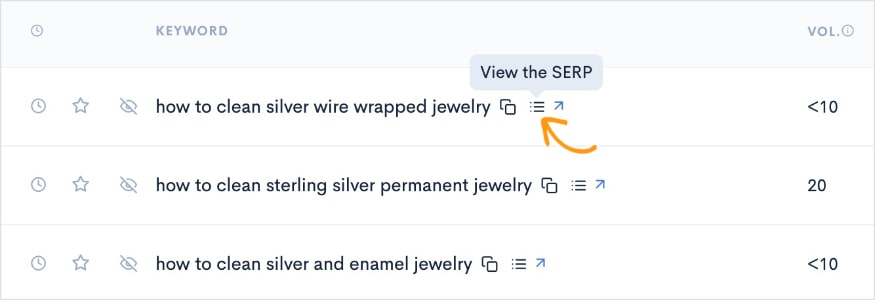
This action will open a window with the featured snippet and top 10 organic results for that specific keyword.
You can click the blue hyperlink to visit the page and investigate the competitor’s content.
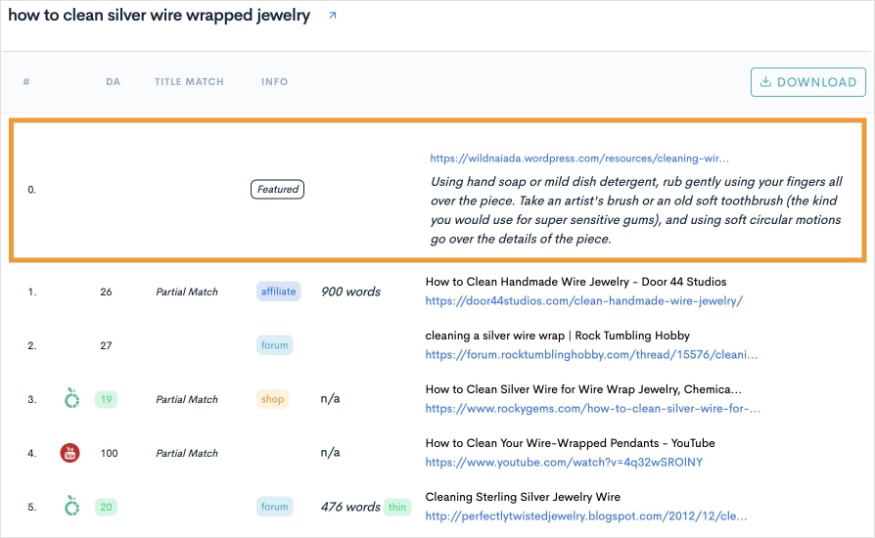
LowFruits also allows you to View on Google if you prefer to see the results directly on the SERP.

Regardless of how you get to the competitor’s page, some questions to ask yourself are:
- What is the format of their content? Is it a paragraph, list, table, or video?
- How long is the featured snippet? Aim for a similar length.
- What specific information is included in the featured snippet? Make sure your content covers the same points.
- How is the content structured? Analyze headings, subheadings, and overall organization.
- What is the overall quality of the content? Can you create something better?
By understanding your competitor’s approach, you can identify opportunities to create even better content that stands out.
3. Make Better Content and Optimize Its Structure
Now it’s time to create content that will outrank the current website in the featured snippet.
Implementing SEO best practices, like strong on-page SEO and technical optimizations, will be crucial.
Luckily, there are tools that streamline this process.
One of my favorites is SEOBoost.
This content optimization tool helps you identify related terms and optimize your content’s structure with the appropriate keywords.
It uses an easy color-coded system to signal when you hit the target for keyword optimizations.
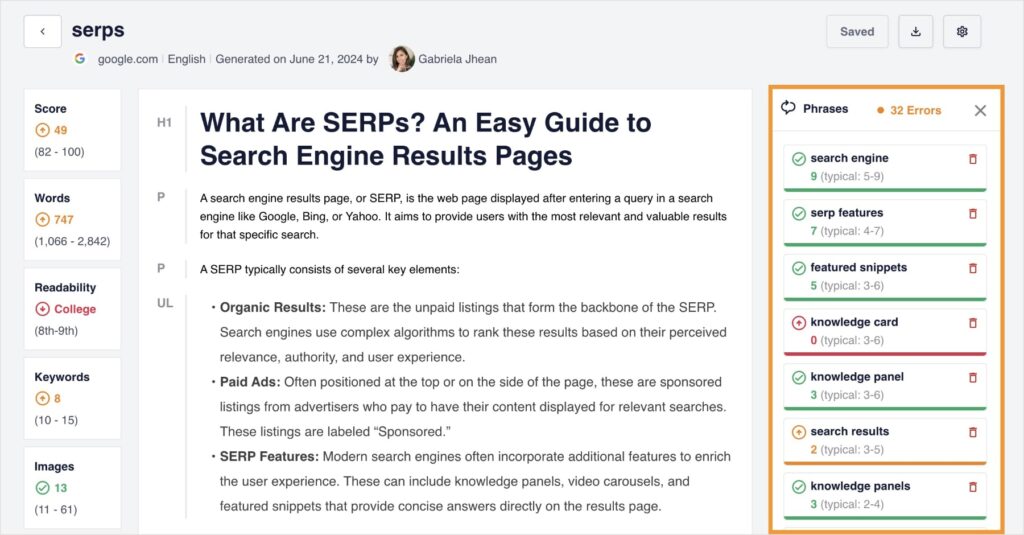
Furthermore, SEOBoost helps you understand your content’s overall performance with a score in the upper-left corner.
Working to improve your content can ultimately affect its visibility in search results.
Finally, I’d like to mention that if you’re a WordPress user, All in One SEO (AIOSEO) is my preferred plugin for SEO.
It has similar content optimization features to SEOBoost, but it allows you to make your optimizations directly in the WordPress editor.
One of its tools, TruSEO, uses checklists to help you catch missed opportunities to improve your content’s visibility.
For example, the Focus Keyphrase Checklist lets you know when you’ve forgotten your keyword in key areas.
(To win a featured snippet, it’s very important to include your primary keyword in your subheadings.)
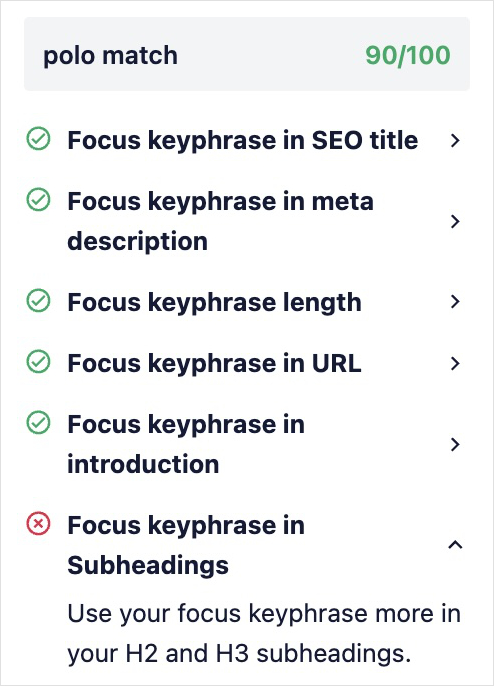
There’s also the Readability Checklist, which checks your paragraph and sentence length and more.
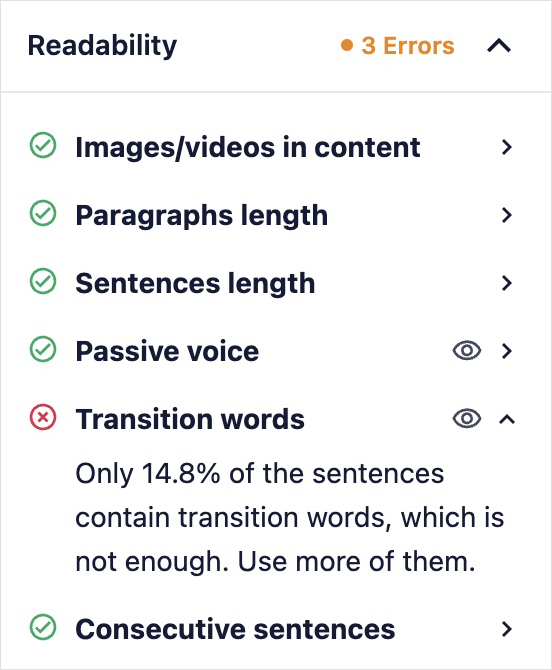
This can be particularly beneficial for targeting featured snippets because search engines prefer concise answers.
Ultimately, creating a better piece of content than your competition depends on a variety of factors.
It’s up to you to investigate how you can provide more value to users than the current ranking website.
4. Include a Table of Contents
While the previous step can be somewhat vague, this next step is very straightforward.
Add a table of contents to your posts.
A table of contents can help Google understand the structure of your content and make it easier for users to find information.
Google also sometimes uses the table of contents to produce list snippets, like the one below.
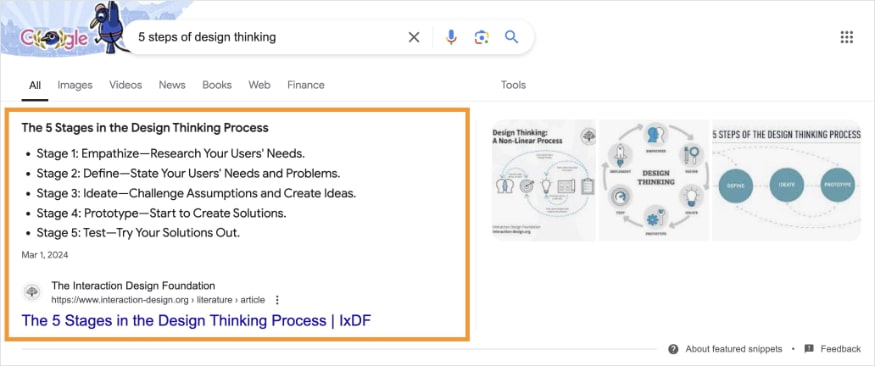
If we visit the above page, we see that the featured snippet list is an exact replica of the table of contents.

Ultimately, this is an easy optimization to make that can influence search engines to generate featured snippets.
5. Implement Schema Markup
Schema markup is a type of structured data that helps search engines understand your content better.
While it doesn’t guarantee a featured snippet, it can significantly increase your chances.
By adding schema markup to your content, you provide clear signals to Google about what your page is about.
Search engines can also use this information to generate SERP features, including featured snippets.
Here are some common schema types to consider:
- Article
- FAQ
- HowTo
- Recipe
- Product
Schema markup lives within the HTML code of your website. Here’s a tutorial for how to add schema to your pages.
And if you’re a WordPress user, you can just the aforementioned AIOSEO plugin. It has a Schema Generator that makes adding schema as easy as clicking a button.
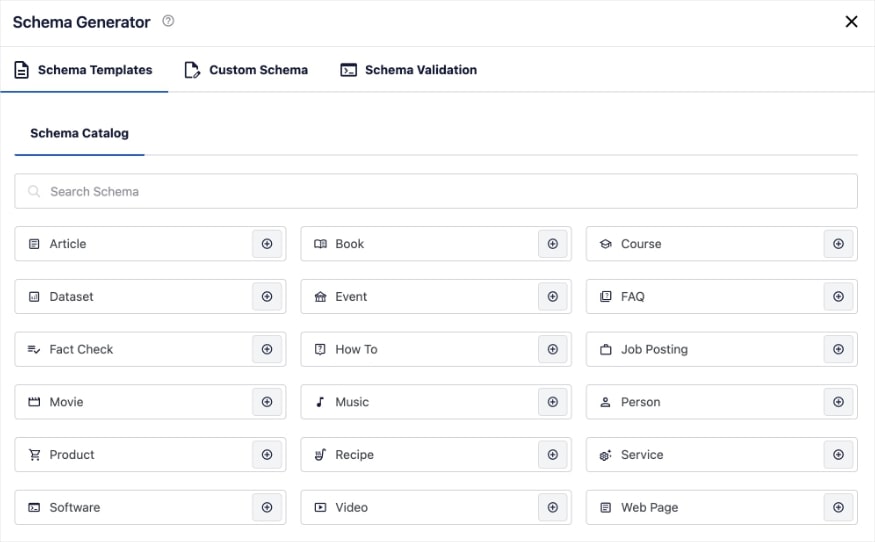
Grow Your Visibility With Featured Snippets
Securing a featured snippet can significantly improve your clickthrough rate (CTR). This means greater visibility in the SERPs and more organic traffic for your website.
By following the strategies outlined in this article, you can increase your chances of achieving this coveted position.
Remember, creating high-quality, informative content that directly answers user queries is essential.
You’ll also want to implement consistent optimizations and a user-centric approach to improve your odds.
Further reading: